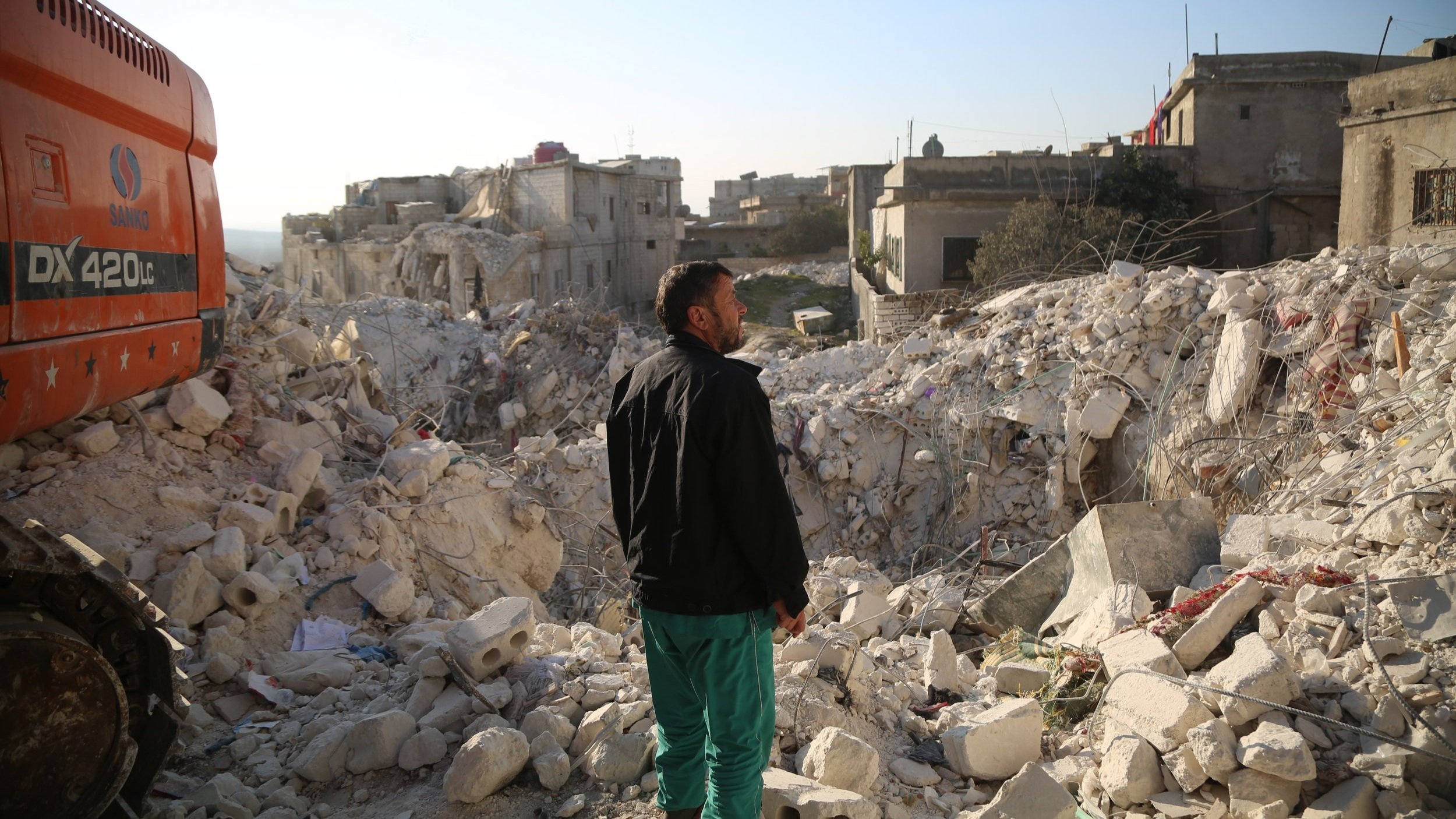Resources
Search our resources
Or filter resources by
Country/region
- Afghanistan 2
- Africa 32
- Americas 3
- Asia 11
- Bangladesh 3
- Belarus 1
- Burkina Faso 3
- Caribbean 7
- Chad 1
- Colombia 3
- Cote D'Ivoire 1
- DRC 1
- Dominica 2
- Ethiopia 3
- Europe 10
- Fiji 6
- Global 52
- Guinea 1
- Haiti 4
- Hati 1
- Horn of Africa 8
- Indonesia 1
- Iraq 1
- Kenya 6
- Libya 1
- Malawi 1
- Middle East 8
- Morocco 2
- Mozambique 4
- Myanmar 1
- Nepal 3
- Niger 2
- Pacific 14
- Pakistan 4
- Palestine 2
- Papua New Guinea 5
- Philippines 6
- Sierra Leone 1
- Somalia 3
- South Sudan 2
- Southeast Asia 7
- Sudan 4
- Syria 3
- Turkiye 3
- Ukraine 6
- Vanuatu 5
- Yemen 1
- Zimbabwe 1
Topic
- AI 4
- CDAC Public Forum 12
- COVID-19 12
- DEPP 7
- Ebola 1
- National Platforms 9
- PSEA 2
- SMS 2
- Sudan 1
- accountability 45
- capacity bridging 15
- cholera 2
- climate 11
- communication 110
- community engagement 80
- conflict 17
- coordination 51
- cyclone 3
- development 1
- digital 30
- disability 2
- disaster 41
- displacement 13
- drought 3
- earthquake 12
- feedback 7
- financing 5
- floods 3
- health 16
- hotline 1
- hurricane 2
- inclusion 11
- information 70
- information integrity 3
- journalism 31
- localisation 28
- media 50
- media development 3
- misinformation 4
- needs assessment 7
- participation 11
- perceptions 1
- policy & advocacy 15
- protection 2
- psychosocial 1
- radio 5
- safeguarding 2
- social media 17
- training 3
- typhoon 5
Empowering crisis-affected communities in Papua New Guinea through information
This guide provides a framework for disseminating lifeline messages to people affected by crises in Papua New Guinea via trusted and accessible communications channels. It also includes key messages and channels for sharing them.
Kenya Media Landscape Guide
Avaliable in English and Swahili, this guide provides a snapshot of the media environment in Kenya, including digital and social media, radio, television, print and other traditional forms of mass communication. The aim is to facilitate reliable, trusted and timely communication, particularly during crises, and to promote a healthy information environment in Kenya.
How to spot harmful information in crises
In times of emergency, finding reliable information online can be challenging. This tipsheet offers practical advice to help you identify trustworthy information and avoid misinformation.
Urgent call to prioritise communication in Gaza
As communications blackouts continue to cut Gaza off from access to information and connectivity, CDAC Network issues an urgent call to let Gazans speak, connect with one another and make informed decisions.
An analysis of the communication and engagement ecosystem in earthquake-affected northwest Syria
This report presents findings from a study aiming to understand the information ecosystem in northwest Syria, where communication and engagement occur in a sensitive and highly politicised environment.
An analysis of the communication and engagement ecosystem in earthquake-affected Türkiye
This report presents findings from a study aiming to understand the information flows and communication ecosystem in post-earthquake Türkiye. The findings are intended to facilitate informed, inclusive and accountable response and recovery planning to meet the needs of affected people.
Digital communication and accountability: insights from a year of discussions with CDAC Network
Through its public events in 2021, CDAC Network explored digital communication and accountability – in particular, asking how technology could offer a tipping point in shifting the power in aid. This policy brief outlines our key takeaways.
Afghanistan Media Landscape Guide
This Media Landscape Guide provides a snapshot of the media in Afghanistan, including the audiences, the producers, the preferences of different groups in the community, the communications culture, and the languages associated with the media.
Belarus Media Landscape Guide
Produced in January 2022, this Media Landscape Guide provides a snapshot of the media at that time in Belarus. It includes an analysis of the recent shocks to the media landscape and an overview of the different types of media and information sources available for Belarusians.
Palestinian Territories Media Landscape Guide
This Media Landscape Guide provides a snapshot of the media in the Palestinian territories, including the audiences, the producers, the preferences of different groups in the community, the communications culture, and the languages associated with the media.
Malawi Media Landscape Guide
This Media Landscape Guide provides a snapshot of the media in Malawi, including the audiences, the producers, the preferences of different groups in the community, the communications culture, and the languages associated with the media.
Burkina Faso Media Landscape Guide
This Media Landscape Guide provides a snapshot of the media in Burkina Faso, including the audiences, the producers, the preferences of different groups in the community, the communications culture, and the languages associated with the media.
Morocco Media Landscape Guide
This Media Landscape Guide provides a snapshot of the media in Morocco, including the audiences, the producers, the preferences of different groups in the community, the communications culture, and the languages associated with the media.
Pakistan Media Landscape Guide
This Media Landscape Guide provides a snapshot of the media in Pakistan, including the audiences, the producers, the preferences of different groups in the community, the communications culture, and the languages associated with the media.
Colombia Media Landscape Guide
This Media Landscape Guide provides a snapshot of the media in Colombia, including the audiences, the producers, the preferences of different groups in the community, the communications culture, and the languages associated with the media.
Ukraine Media Landscape Guide
The Media Landscape Guide for Ukraine was researched and written just before the Russian invasion of Ukraine. It provides a snapshot of the media landscape in Ukraine as it was at January 2022.
Relevance, capacity and remote localisation: technology and power in aid
Insights from the 2021 CDAC Public Forum: part two.
Start-ups, trust and letting go: technology and power in aid
Insights from the 2021 CDAC Public Forum: part one.
Tech localisation: why the localisation of aid requires the localisation of technology
In this background paper for the 2021 CDAC Public Forum, Kaurin argues that, ‘Localisation of technology can support humanitarian localisation in making communities resilient, instead of reliant on international aid and services that are disrupted by global crises such as the COVID-19 pandemic.’
Is technology broken? Insights from the 2020 CDAC General Assembly and Public Forum: part two
How do we make technology inclusive, fair and accessible? Read insights from the 2020 CDAC AGA and Public Forum, ‘Accountability in the age of the algorithm: championing pathways to inclusion in tech-driven futures’, where interdisciplinary experts wrestled with the dual problems of equity and efficacy.




















